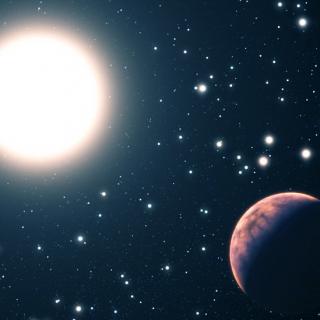Bibcode
Adibekyan, V. Zh.; Oshagh, M.; Israelian, G.; Correia, A. C. M.; Sousa, S. G.; Delgado Mena, E.; Mordasini, C.; Mortier, A.; Santos, N. C.; Figueira, P.
Bibliographical reference
Astronomy and Astrophysics, Volume 560, id.A51, 8 pp.
Advertised on:
12
2013
Journal
Citations
78
Refereed citations
67
Description
Aims: We explore the relations between physical and orbital
properties of planets and properties of their host stars to identify the
main observable signatures of the formation and evolution processes of
planetary systems. Methods: We used a large sample of FGK dwarf
planet-hosting stars with stellar parameters derived in a homogeneous
way from the SWEET-Cat database to study the relation between stellar
metallicity and position of planets in the period-mass diagram. We then
used all the radial-velocity-detected planets orbiting FGK stars to
explore the role of planet-disk and planet-planet interaction on the
evolution of orbital properties of planets with masses above 1
MJup. Results: Using a large sample of FGK dwarf hosts
we show that planets orbiting metal-poor stars have longer periods than
those in metal-rich systems. This trend is valid for masses at least
from ≈10 M⊕ to ≈4 MJup. Earth-like
planets orbiting metal-rich stars always show shorter periods (fewer
than 20 days) than those orbiting metal-poor stars. However, in the
short-period regime there are a similar number of planets orbiting
metal-poor stars. We also found statistically significant evidence that
very high mass giants (with a mass higher than 4 MJup) have
on average more eccentric orbits than giant planets with lower mass.
Finally, we show that the eccentricity of planets with masses higher
than 4 MJup tends to be lower for planets with shorter
periods. Conclusions: Our results suggest that the planets in the
P - MP diagram are evolving differently because of a
mechanism that operates over a wide range of planetary masses. This
mechanism is stronger or weaker, depending on the metallicity of the
respective system. One possibility is that planets in metal-poor disks
form farther out from their central star and/or they form later and do
not have time to migrate as far as the planets in metal-rich systems.
The trends and dependencies obtained for very high mass planetary
systems suggest that planet-disk interaction is a very important and
orbit-shaping mechanism for planets in the high-mass domain.
Related projects

Observational Tests of the Processes of Nucleosynthesis in the Universe
Several spectroscopic analyses of stars with planets have recently been carried out. One of the most remarkable results is that planet-harbouring stars are on average more metal-rich than solar-type disc stars. Two main explanations have been suggested to link this metallicity excess with the presence of planets. The first of these, the “self
Garik
Israelian